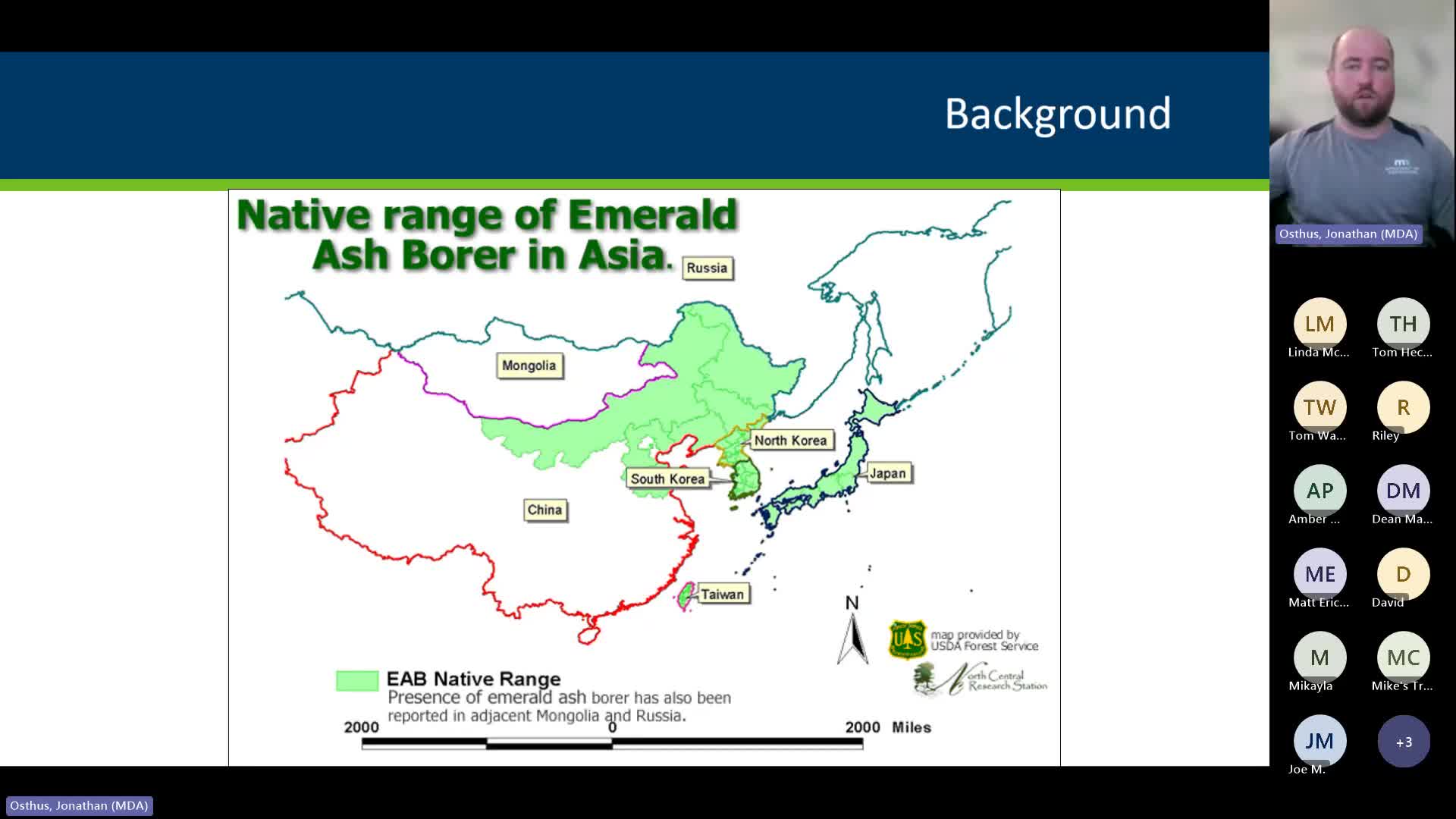Emerald Ash Borer Infestation Detected in Crow Wing County Spurring Urgent Meeting
February 22, 2024 | Agriculture, Department of , Agencies, Boards, & Commissions, Executive, Minnesota

This article was created by AI summarizing key points discussed. AI makes mistakes, so for full details and context, please refer to the video of the full meeting. Please report any errors so we can fix them. Report an error »

The Emerald Ash Borer Informational Meeting held in Crow Wing County on February 22, 2024, focused on the recent discovery of the invasive insect in the Brainerd area. The meeting aimed to educate residents about the life cycle and impact of the emerald ash borer (EAB) on local ash trees.
Experts explained that the adult beetles are most active from May through September, with initial emergence typically occurring in late May or early June in Central Minnesota. After emerging, the beetles engage in maturation feeding on tree leaves, which is not easily noticeable. Following this, they mate and lay eggs in the bark of ash trees, particularly in branches that are 2 to 6 inches in diameter. A single female can lay between 60 to over 200 eggs, leading to rapid population growth.
Once the eggs hatch, the larvae burrow into the tree's cambium layer, where they feed and disrupt the flow of nutrients between the roots and the crown of the tree. This feeding behavior causes significant damage, ultimately threatening the health of ash trees. The life cycle of the emerald ash borer can vary, with some individuals completing their cycle in one year while others may take two years, especially in northern regions with shorter growing seasons.
The meeting underscored the importance of understanding the EAB's life cycle, particularly in relation to the movement of firewood, which can inadvertently transport the larvae. As the presence of the emerald ash borer poses a serious threat to local ash populations, residents were encouraged to stay informed and take preventive measures to protect their trees.
Experts explained that the adult beetles are most active from May through September, with initial emergence typically occurring in late May or early June in Central Minnesota. After emerging, the beetles engage in maturation feeding on tree leaves, which is not easily noticeable. Following this, they mate and lay eggs in the bark of ash trees, particularly in branches that are 2 to 6 inches in diameter. A single female can lay between 60 to over 200 eggs, leading to rapid population growth.
Once the eggs hatch, the larvae burrow into the tree's cambium layer, where they feed and disrupt the flow of nutrients between the roots and the crown of the tree. This feeding behavior causes significant damage, ultimately threatening the health of ash trees. The life cycle of the emerald ash borer can vary, with some individuals completing their cycle in one year while others may take two years, especially in northern regions with shorter growing seasons.
The meeting underscored the importance of understanding the EAB's life cycle, particularly in relation to the movement of firewood, which can inadvertently transport the larvae. As the presence of the emerald ash borer poses a serious threat to local ash populations, residents were encouraged to stay informed and take preventive measures to protect their trees.
View full meeting
This article is based on a recent meeting—watch the full video and explore the complete transcript for deeper insights into the discussion.
View full meeting
